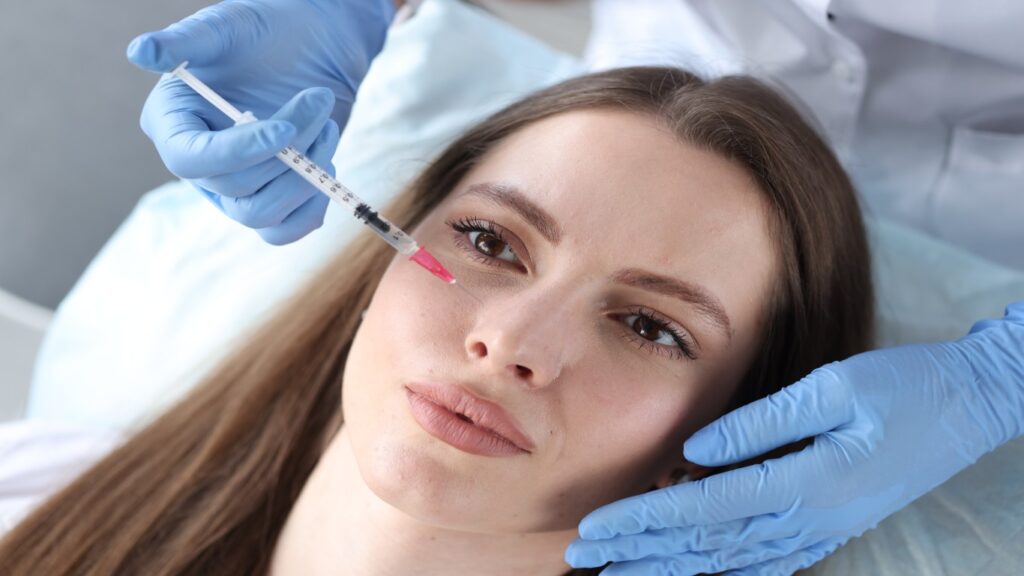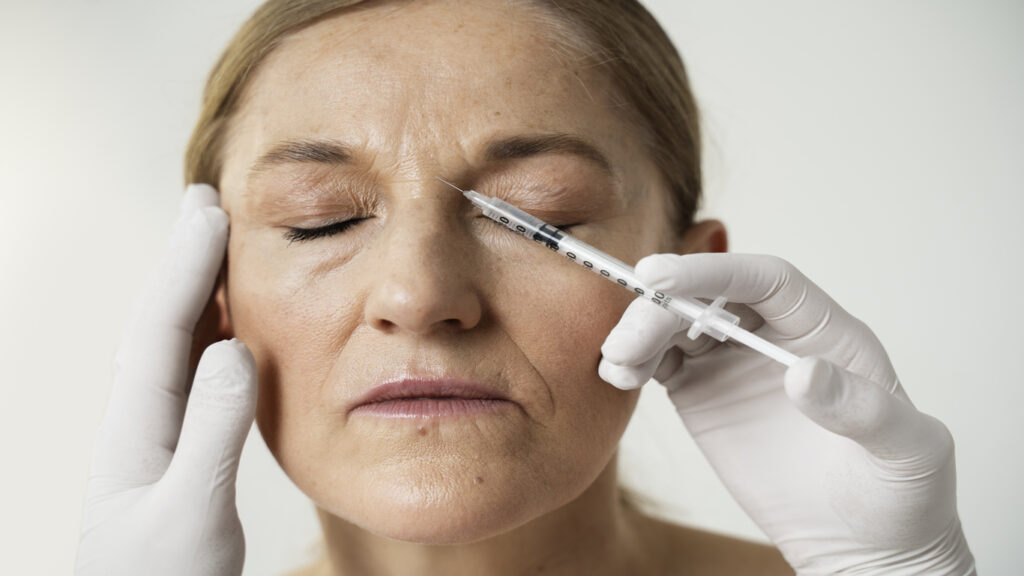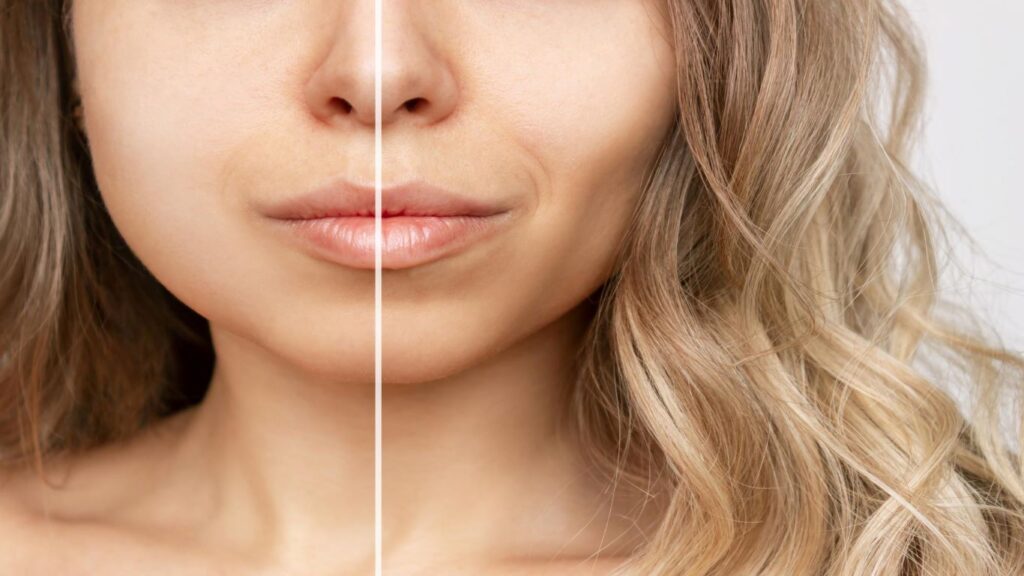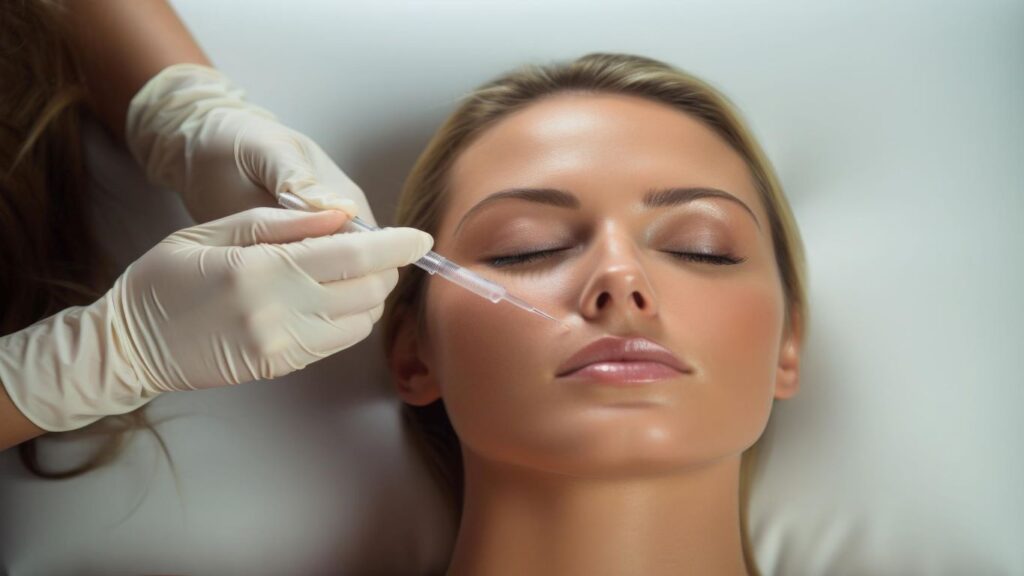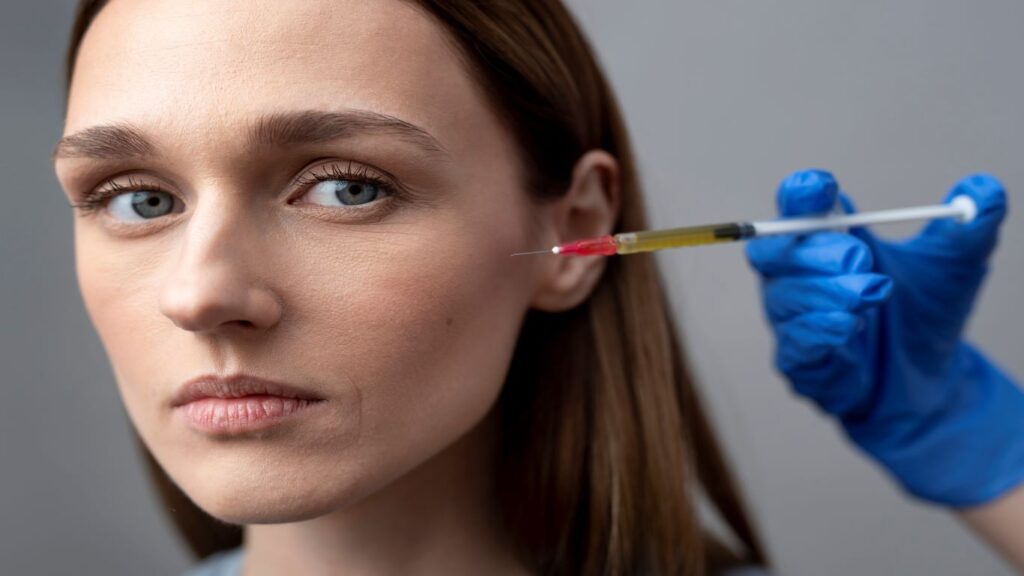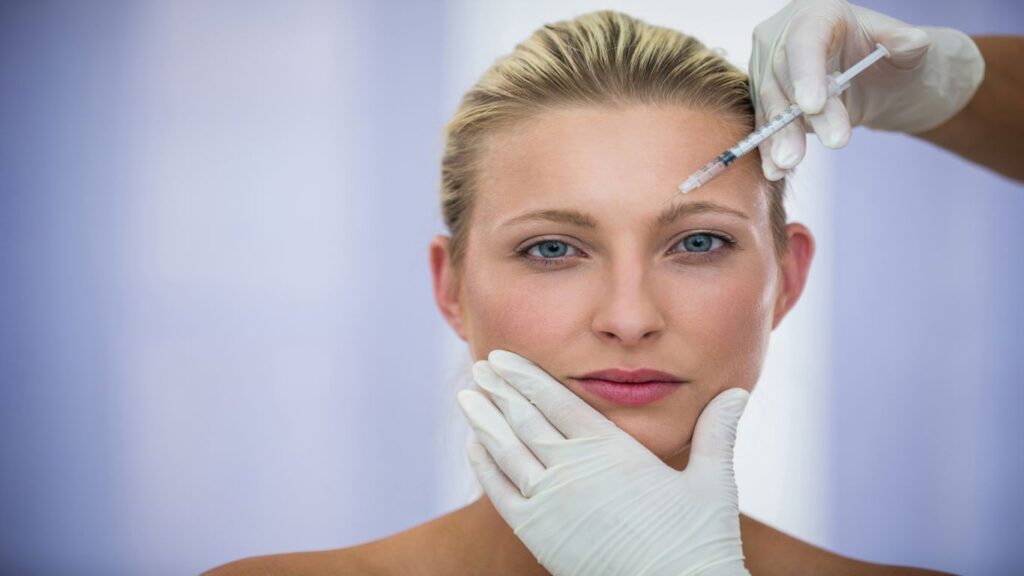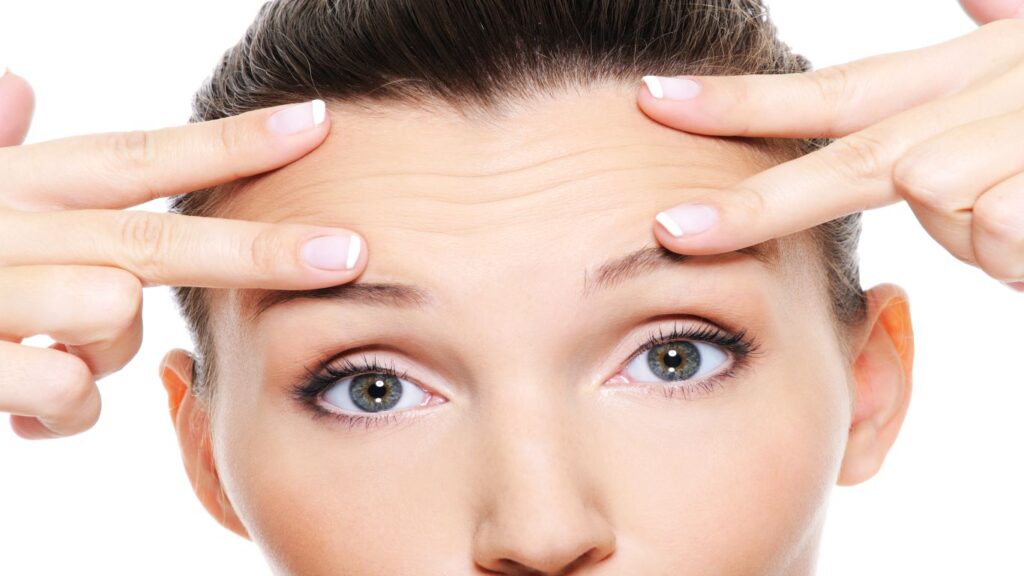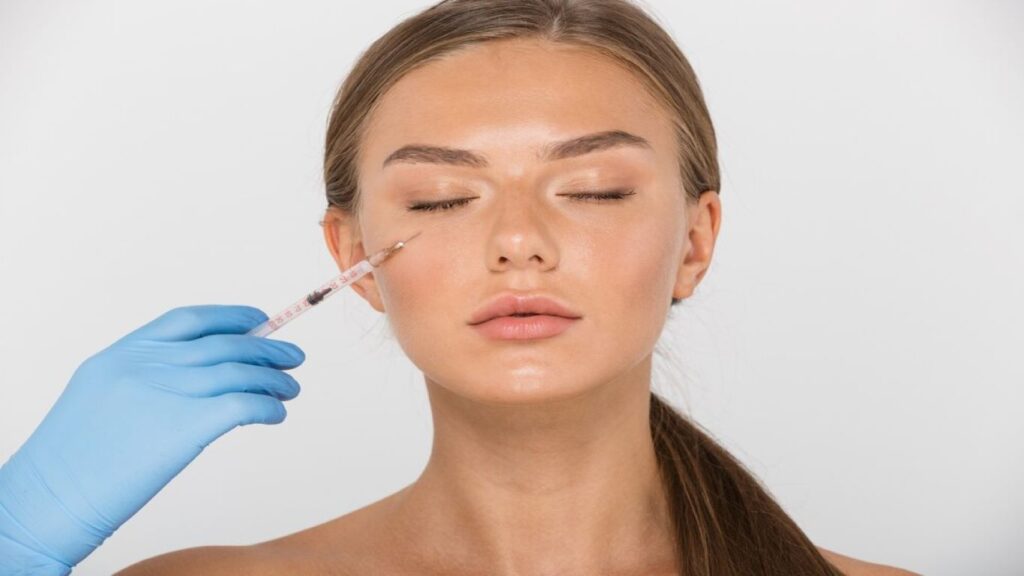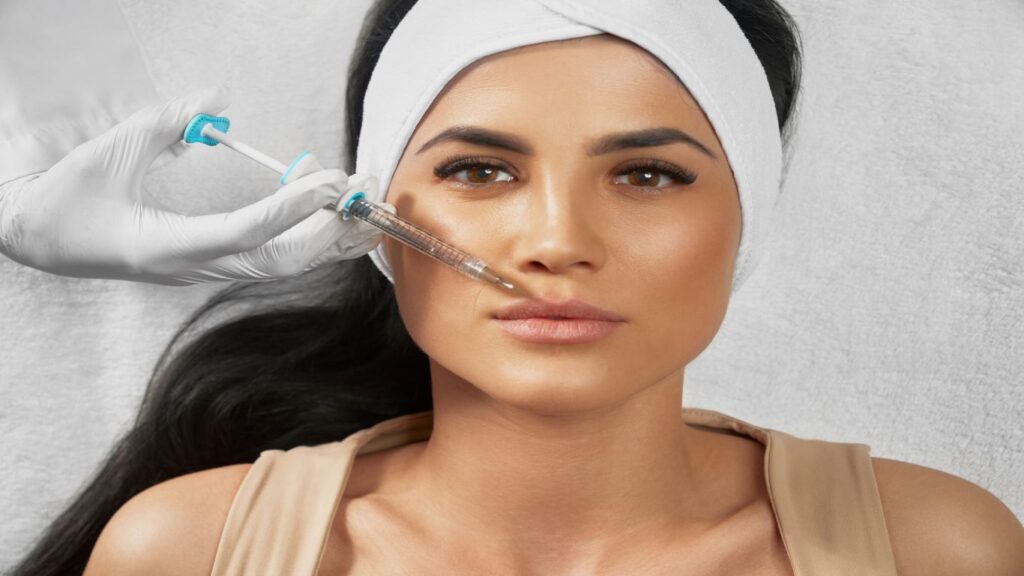A Comprehensive Guide to Radiesse Filler 2023
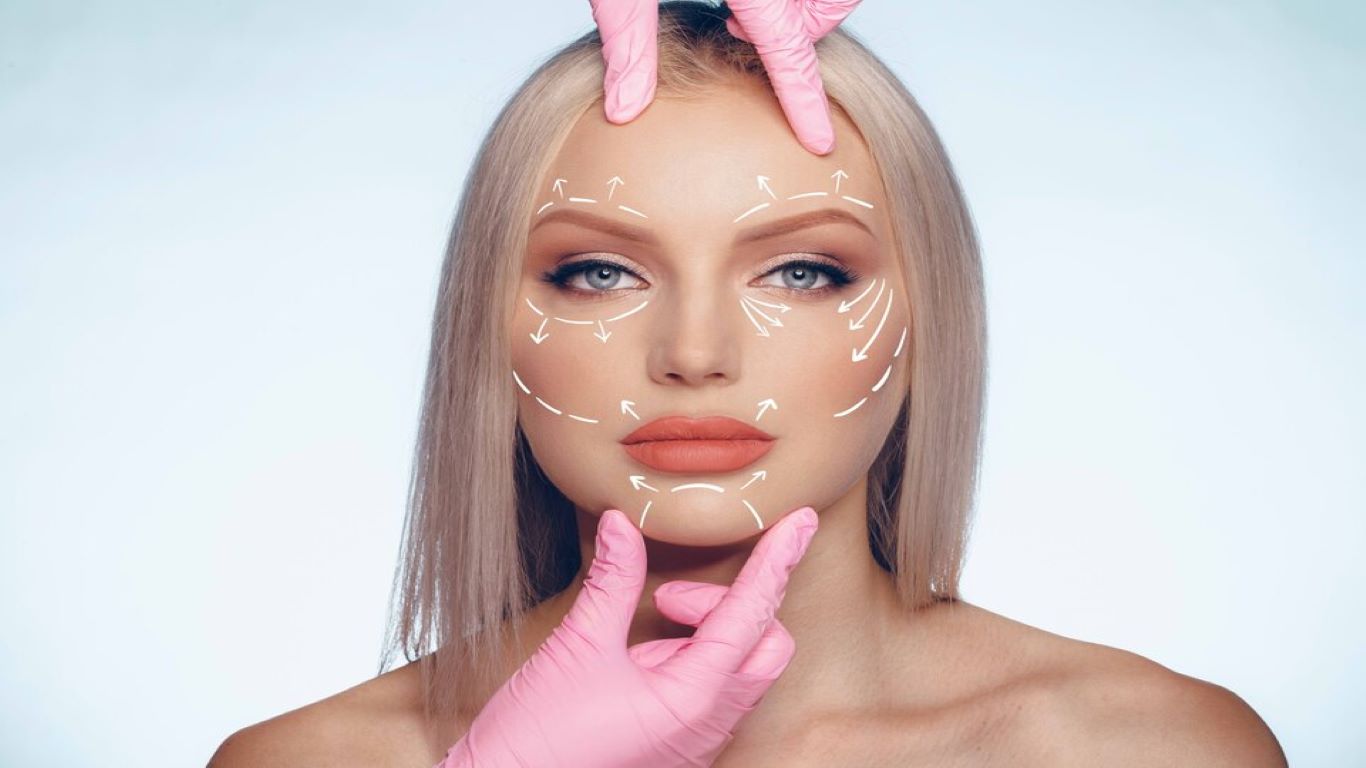
Table of Contents
Prepare to be taken to a new level of face rejuvenation with Radiesse filler – the game-changing injectable therapy redefining the beauty world! Radiesse, unlike typical dermal fillers that rely on hyaluronic acid, contains unique calcium-based microspheres that help restore face volume and reverse indications of ageing.
It’s ideal for those with moderate-to-severe volume loss in the face and those searching for hand rejuvenation.
What Is Radiesse Filler?
Radiesse filler, like other facial fillers, is an injectable gel-like composition that is harmless and may naturally integrate into your skin and body tissues. It is used to fill creases and lines all over the face, including nasolabial folds and laugh lines, but it is also FDA-approved for filling in the back of the hands when they become malnourished due to volume loss. Because ageing affects the whole body, Radiesse can benefit persons with age indications in both the face and hands.
Radiesse Fillers: How Do They Work?
Radiesse is a thicker dermal filler composed of calcium hydroxylapatite microspheres that add rapid volume to the face when injected. They continue to operate after that by boosting collagen formation, aiding skin tightening. Your body gradually absorbs the microspheres, leaving just natural collagen in situ.
Radiesse adds volume at first, but as collagen synthesis gradually rises, it smooths out wrinkles, fine lines, and folds. This implies that, besides the initial benefits, you will continue to observe progress for several months.
Radiesse Is Used To Treat What?
Radiesse filler, like most dermal fillers, does not cure a specific condition, although it is particularly well-known for its volumizing impact. If you have more severe fine lines, wrinkles, or folds, your practitioner may advise you to use Radiesse instead of other fillers to treat these symptoms.
Radiesse may also be used to shape the face and is a non-invasive alternative to cosmetic surgery. For example, it may be used in non-surgical rhinoplasty operations and sometimes to address a weak chin or hollow temples.
Radiesse also aids in treating skin elasticity loss caused by causes such as age and weight loss. It is frequently used to treat concerns such as drooping jowls and loose skin on the neck.
What Takes Place During Radiesse Treatment?
Radiesse therapy is a straightforward process that typically takes between 15 and 20 minutes. Before injections, your practitioner may apply a topical numbing lotion to the treatment region. While some individuals experience slight discomfort, Radiesse injections are usually painless.
In contrast to previous therapies, some outcomes will be seen right away. You will notice a rise in volume straight soon, but it will continue to improve significantly over time.
Will There Be Downtime Following Treatment?
To avoid difficulties, your practitioner will give you precise aftercare advice. Radiesse injections need little downtime in the vast majority of situations. You may be urged to avoid alcohol and remain out of the sun for the first 24 to 48 hours, but most activities may be resumed immediately.
You will have some bruising and swelling, disappearing in a week. More significant problems, such as infections, may develop in rare circumstances. Contact your practitioner if you are experiencing issues such as severe discomfort or discharge. The majority of the problems may be resolved with timely treatment.
Is Radiesse Filler A Permanent Procedure?
Radiesse and other dermal fillers produce temporary results. Several factors, including the location of your injections, determine Radiesse’s duration. Cheek and chin injections, for example, can last up to 15 months, but injections around the nose or in the lips typically last between 9 and 12 months.
No two patients are alike. Fillers may last shorter or longer than expected, depending on how your body reacts to them; however, following aftercare instructions carefully may help fillers last longer.
To help sustain outcomes, some patients have follow-up treatments six to seven months following their initial injections.
What Is Calcium Hydroxylapatite Injectable?
The skin, bones, fat, and muscles in our faces diminish and change as we age. These alterations cause face creases, folds, laxity, and volume loss. Radiesse is an injectable calcium hydroxylapatite (CaHA) filler that is FDA-authorized to enhance the look of moderate to severe face creases and folds, such as nasolabial folds. It can also be used to treat the symptoms of face fat loss caused by the HIV infection. CaHA comes with and without lidocaine. Lidocaine is an anaesthetic that is used to alleviate discomfort and increase patient comfort during the injection procedure.
First, your doctor will mark the places that will be injected. Topical or injectable numbing medication may be administered for increased comfort before surgery. CaHA is then injected into the skin. CaHA produces immediate benefits and can boost collagen synthesis in the regions injected over time. The effects of injectable CaHA usually persist for around a year. After that, more injections are necessary to keep the results going.
When Should Injectable Calcium Hydroxylapatite Be Used?
CaHA filler can be utilized in the treatment of
- Wrinkles
- Folds of the nose and mouth
- Lines for marionettes
- Sulcus pre-jowls
- Chin wrinkles
Where Should Injectable Calcium Hydroxylapatite Not Be Used?
CaHA is not utilized as a filler.
- Lip enhancement
- Around the lips, there are fine wrinkles.
- Around the eyes
Who Should Not Use Injectable Calcium Hydroxylapatite?
CaHA is not advised for people with:
- Currently suffering from oral herpes or a comparable infection
- uncontrollable Diabetes
- Blood clotting issues
- An allergic reaction to CaHA components or a history of anaphylaxis
- Patients who are pregnant or nursing

What Is The Difference Between Radiesse Vs Juvederm
Radiesse vs Juvederm are popular dermal fillers that may revitalize the skin by smoothing lines and wrinkles. They are both non-surgical, painless, and require no recovery time. Both therapies can also be used to address comparable face ageing signs.
However, there are a few key distinctions between Radiesse vs Juvederm that potential filler patients should be aware of.
Formulas
Juvederm is a gel-based filler that contains the active component hyaluronic acid (HA). HA is a potent humectant, capable of attracting and retaining up to 1,000 times its weight in water. Juvederm’s water absorption property makes it so compelling: once injected into the skin, Juvederm filler absorbs moisture into the treatment region to plump the skin and eliminate wrinkles.
Radiesse is an injectable filler that blends a gel with calcium hydroxylapatite microspheres, which are structurally identical to those found in bones and teeth. Both ingredients work together to plump the skin by increasing collagen formation. Radiesse’s gel component, when injected, generates a temporary fill that lasts three to six months. The calcium particles left behind provide a framework for your tissue to develop, resulting in long-term filling.
Addressed Treatment Areas
Radiesse vs Juvederm can address ageing signs in the cheeks and jawline. Both fillers can be used to treat marionette lines (also known as laugh lines), which are vertical lines that extend from the corners of the mouth to the chin.
Juvederm Ultra (original formula), Juvederm Voluma (FDA authorized to boost cheek volume), Juvederm Volbella (targeting lip lines and other minor lines around the mouth), and Juvederm Vollure (formulated to target severe folds and wrinkles, including the nasolabial folds) are all part of the Juvederm family.
Radiesse’s volumizing properties can be utilized to address the hands in addition to managing the same regions as Juvederm. It’s also an excellent filler for hand rejuvenation, giving new volume to hide bones and veins.
Results
Radiesse vs Juvederm both produce substantial effects, making the skin seem younger. Juvederm is effective at treating finer lines and deeper wrinkles (depending on which Juvederm product is used), whereas Radiesse is good at treating deeper (more severe) lines and folds.
How Long Does Radiesse Last
Dermal fillers all have transitory effects. The filler is eventually degraded by the body, restoring the treated region to its pre-treatment state. As described in a previous blog article, the length of the result might vary substantially. Aside from the composition of the filler, there might be significant changes in other aspects, such as a patient’s metabolism, that impact how long the benefits of any dermal filler endure.
Radiesse often lasts longer than Juvederm because it stimulates collagen synthesis in the skin. Radiesse results typically last 18-24 months (and maybe longer), although Juvederm results can last up to a year (2 years for Juvederm voluma).
Patients might retain their Radiesse or Juvederm results by having periodic maintenance procedures.
Pain
Radiesse vs Juvederm procedures cause slight pain or discomfort, especially when administered by a professional injector. Both treatments are minimally invasive and include a series of injections with an ultrafine needle. Many Juvederm and Radiesse formulations contain lidocaine to numb the injection site during the treatment. Patients undergoing filler treatments might request that a topical numbing lotion be used before injections.
Time For Treatment
Radiesse vs Juvederm treatments are both relatively rapid to execute, with most operations taking 30 to 45 minutes, depending on the location and size of the treatment region. Dermal filler treatments can even be done while the patient is at work.
Recovery
Radiesse vs Juvederm do not require any recovery time. Patients who get either filler can resume regular activities shortly following their treatment.
Adverse Reactions
Both Radiesse vs Juvederm procedures have minimal and short-term side effects, with the majority of them resolving without the need for intervention. Bruising, swelling, redness, rash, itching, or discolouration near the injection site are common adverse effects. Serious side effects are uncommon. However, they might include allergic reactions, skin colour changes, infection, numbness, and scarring.
Cost
Radiesse often costs more than Juvederm. Patients should bear in mind, however, that Radiesse lasts longer than Juvederm.
It’s crucial to remember that the cost of any dermal filler treatment can vary substantially from person to person, depending on each patient’s specific needs and intended outcome. The total cost of the treatment is heavily influenced by the amount of filler used.
Which Is Better, Juvederm Or Radiesse?
Many readers may be wondering which filler is best at this stage. Here’s our (perhaps disappointing) response Radiesse vs Juvederm are both fantastic! Both fillers offer advantages in the battle against ageing signs. Patients should consider both choices and allow a skilled injector to analyze their needs and goals when deciding which filler to utilize. In certain situations, a patient’s optimum treatment strategy may include using Juvederm and Radiesse for the desired outcome.
How Much Does Radiesse Filler Cost?
So, how much does it cost to have a Radiesse® injection? The average cost of a Radiesse® injection treatment in 2019 was $690, according to the American Society of Plastic Surgeons (ASPS). Please remember that this is a rough estimate based on the price of Radiesse® per syringe, the charge of the provider providing the injection, and the facility’s geographic location.
- Radiesse® costs an average of $690.
- Radiesse® costs between $650 to $2,700.
Radiesse® applicants’ total cost of the cosmetic injection will be determined by various parameters indicated in the table below.
Factors To Consider In Radiesse® Procedure Cost

Radiesse Filler Before And After Treatment Instructions
ONE WEEK BEFORE TREATMENT
- Over-the-counter blood thinners such as aspirin, Motrin, ibuprofen, and Aleve should be avoided.
- Supplements such as St. John’s Wort, Ginkgo Biloba, primrose oil, garlic, ginseng, and Vitamin E should be avoided.
TWO DAYS BEFORE TREATMENT
- Tretinoin (Retin-A), Retinol, Retinoids, Glycolic Acid, and other “anti-ageing” products should be avoided.
- Waxing, bleaching, tweezing, or using hair removal lotion to treat the region should be avoided.
Begin taking Arnica two days before the operation. This is optional; however, it will assist in reducing bruising!
24 HOURS BEFORE TREATMENT
- Do not consume alcoholic drinks. 24 hours before
Right After Your Treatment
You may notice redness, swelling, or bruising immediately following your treatment, which can continue anywhere from a few days to a week. We recommend our patients freeze the injected region to avoid these adverse effects, as long as the cold pack is not applied to the treated area, since this may affect the outcomes.
- For the next 24 hours, avoid heavy exertion.
- Avoid exposing the region to high temperatures.
- For the first few nights, avoid putting pressure on the treated regions (sleep on your back if feasible).
- For the next 24 hours, abstain from alcohol.
- For the next 24 hours, avoid using AHA, Retinol/Vitamin C treatment, or oil-based makeup.
- For two weeks following treatment, avoid facials, facial waxing, Glycolic or AHA peels, IPL or energy-based treatments, and microdermabrasion.

Conclusion
Radiesse filler can replenish lost facial volume and smooth out more severe wrinkles and fine lines. Treatment is usually painless and rapid, with a low risk of adverse side effects. While Radiesse injection are not permanent, the benefits typically last a year or more, and more treatment is always an option.
Radiesse is only one of several fillers available. A professional consultation can help you assess whether it is the best way to achieve your aesthetic objectives.
FAQs
How Long Does A Radiesse Injection Appointment Last?
Radiesse injections typically take half an hour to an hour to finish, depending on the region being treated.
Radiesse Injections: Are They Painful?
Radiesse injections are comfortable. The injections only cause transient discomfort, equivalent to a tiny pinching feeling and some pressure. To alleviate pain, a topical numbing agent can be administered before injections; however, most people find the injections pleasant without any numbing agents. To reduce swelling and pain, ice is allocated to the affected region.
Radiesse Is Given In What Way?
Radiesse injections are injected intradermally into the mentioned treatment region using a tiny gauge needle.
How Long Does Radiesse Take To Work?
Radiesse produces instant results; nevertheless, swelling is visible after Radiesse injections, and it might take up to two weeks for any swelling or probable bruising to disappear. Radiesse will have stabilized within a few weeks, and continued improvement will be visible because of increased collagen synthesis following treatment.
Radiesse Lasts How Long?
Radiesse can be used for 18-24 months; however, certain people may metabolize Radiesse faster than others.
Is There Any Downtime Following Radiesse Treatment?
There is no downtime following Radiesse treatment, and you are not obliged to take any time off from work. You can return to work immediately and continue normal activities; however, exercise is not suggested for 24 hours following injections. Mild swelling, red lumps, or bruising may emerge following injections; however, any redness fades quickly after treatment, and makeup can be applied carefully.
How Can I Determine Whether Radiesse Is The Best Dermal Filler For Me?
Your injection specialist and skincare expert will address your skin issues, discuss your objectives, and propose if Radiesse is the ideal dermal filler for you based on your specific needs during your appointment at SkinTight Aesthetics.

